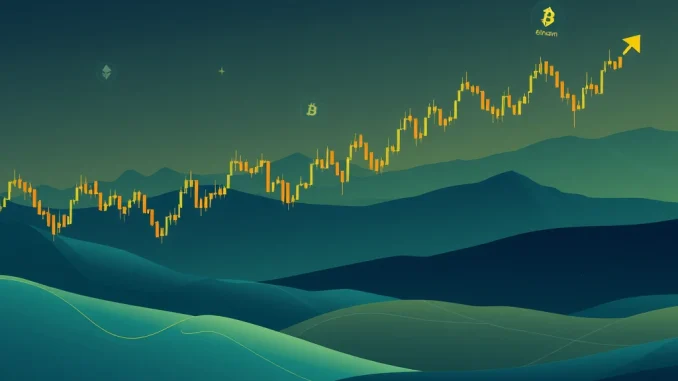
The cryptocurrency market is known for its volatility, and nowhere is this more apparent than in the perpetual futures market. Traders using leverage can see their positions wiped out rapidly when prices move against them, leading to significant liquidations. Over the past 24 hours, we’ve seen a substantial amount of capital liquidated across major cryptocurrencies, highlighting the inherent risks of leveraged trading. Let’s dive into the recent 24 hour crypto liquidation data to understand where the pain points were.
24 Hour Crypto Liquidation Snapshot
In just the last 24 hours, over $160 million in leveraged positions were liquidated across the crypto market. This figure represents contracts forcibly closed by exchanges because the trader’s margin fell below the required level to maintain the position. Here’s a quick breakdown of the top assets affected:
- Bitcoin (BTC): $64.08 million liquidated. A significant 70.91% of this was from short positions.
- Ethereum (ETH): $86.28 million liquidated. Similar to BTC, 69.87% of ETH liquidations were from short positions.
- Solana (SOL): $10.47 million liquidated. In contrast to BTC and ETH, 52.78% of SOL liquidations were from long positions.
These numbers give us a clear picture of where traders were positioned and how recent price movements impacted them.
Bitcoin Liquidation and Ethereum Liquidation Trends
The data reveals that Bitcoin liquidation and Ethereum liquidation accounted for the vast majority of the total liquidated value. What stands out is the high percentage of short positions being liquidated for both BTC and ETH. This indicates that the price action over the last 24 hours moved upwards, catching traders who were betting on a price decline off guard. When a short position is liquidated, it means the asset’s price increased beyond a certain threshold, exceeding the margin available in the trading account.
Ethereum saw the highest single asset liquidation value, surpassing Bitcoin’s total for this period. This could suggest higher leverage being used in ETH perpetual futures or a more volatile price swing relative to the average short position entry points compared to BTC.
Understanding Crypto Futures Liquidation Data
Analyzing crypto futures liquidation data provides valuable insights into market sentiment and potential price drivers. Large liquidation cascades, especially of short positions, can sometimes fuel further price increases as exchanges buy the underlying asset to close those positions. Conversely, mass long liquidations can accelerate price drops.
Solana’s data offers a different perspective. While its total liquidation value is significantly lower than BTC and ETH, the majority being long liquidations suggests that SOL may have experienced a downward price movement that liquidated traders betting on a price increase. This contrast highlights how different assets can exhibit distinct trading dynamics even within the same 24-hour window.
Navigating Crypto Liquidation Risks
The substantial crypto liquidation figures serve as a stark reminder of the risks associated with trading perpetual futures, particularly with high leverage. For traders, understanding this data is crucial. It shows where crowded trades might be and how quickly positions can be erased. Key takeaways include:
- Leverage is a Double-Edged Sword: While it can amplify gains, it equally amplifies losses, leading swiftly to liquidation.
- Market Volatility is Constant: Prices can move sharply in either direction, making leveraged positions vulnerable.
- Sentiment Indicators: Dominant short or long liquidations can hint at recent market direction and the pain felt by certain trader groups.
Effective risk management, including setting stop-loss orders and using appropriate leverage levels, is essential to avoid becoming another statistic in the daily liquidation reports.
Conclusion
The past 24 hour crypto liquidation report underscores the volatile nature of leveraged trading in the digital asset space. With over $160 million liquidated, primarily hitting short positions in Bitcoin and Ethereum perpetual futures, the data highlights the impact of recent upward price movements. Monitoring crypto liquidation data is a valuable practice for traders seeking to understand market dynamics and manage their exposure to risk. As the market continues to evolve, navigating these leveraged products with caution and robust risk strategies remains paramount.



